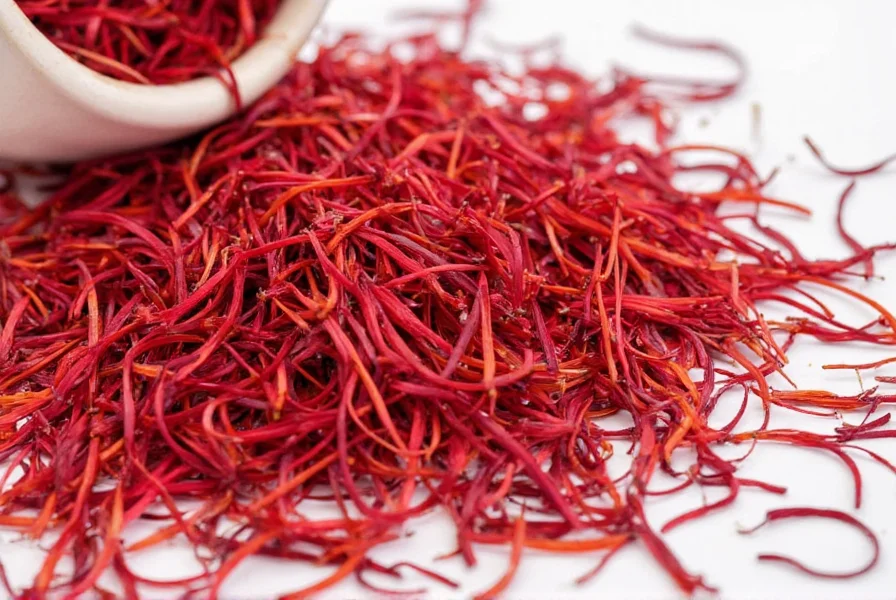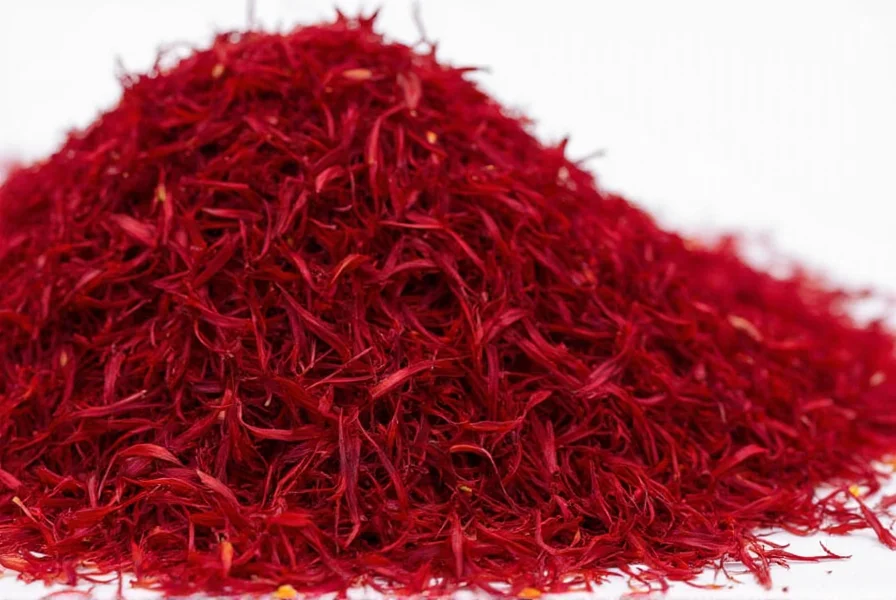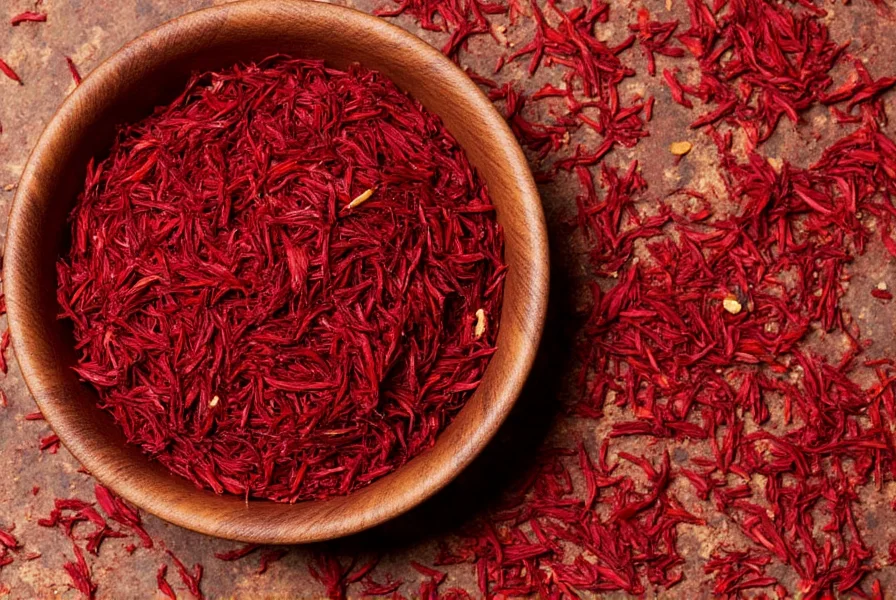Saffron, the world's most expensive spice by weight, has been prized for millennia not just for its culinary uses but for its remarkable health properties. Derived from the delicate stigmas of Crocus sativus flowers, this golden spice contains powerful bioactive compounds that modern science continues to validate. Unlike many wellness trends, saffron's benefits are supported by numerous clinical trials and systematic reviews, making it one of the few natural supplements with substantial evidence backing its therapeutic potential.
The Science Behind Saffron's Health Properties
At the heart of saffron's health benefits are two key compounds: crocin and crocetin. These carotenoids give saffron its distinctive color and are responsible for most of its biological activity. Research published in Human Psychopharmacology demonstrates that these compounds influence neurotransmitter systems, particularly serotonin, which explains saffron's mood-enhancing effects. Unlike synthetic antidepressants, saffron works through multiple pathways, potentially offering benefits with fewer side effects.
Proven Health Benefits of Saffron
Mood Enhancement and Depression Management
Among the most well-documented saffron benefits is its effectiveness for mood disorders. A comprehensive meta-analysis in Journal of Affective Disorders reviewed 23 clinical trials involving over 1,800 participants. The analysis confirmed that saffron supplementation (typically 30 mg daily of standardized extract) significantly improved symptoms of mild-to-moderate depression compared to placebo. Remarkably, it performed comparably to conventional antidepressants like fluoxetine and imipramine, but with better tolerability.
For those seeking scientific benefits of saffron for depression, the evidence suggests it works by modulating serotonin, dopamine, and norepinephrine levels while reducing inflammation in brain regions associated with mood regulation.
Eye Health Protection
Saffron's antioxidant properties extend significantly to eye health. Studies in Investigative Ophthalmology & Visual Science show that saffron supplementation (20 mg daily) improves retinal function in patients with age-related macular degeneration (AMD) and retinitis pigmentosa. The crocin in saffron appears to protect photoreceptor cells from light damage and improve blood flow to the retina.
| Health Benefit | Effective Dosage | Timeframe for Results | Key Research Findings |
|---|---|---|---|
| Mood support | 30 mg/day extract | 4-8 weeks | Comparable to SSRIs for mild-moderate depression |
| Eye health | 20 mg/day extract | 3 months | Improved retinal function in AMD patients |
| Antioxidant effects | 15-30 mg/day | 2-4 weeks | Reduced oxidative stress markers by 20-30% |
Potent Antioxidant and Anti-inflammatory Effects
The saffron antioxidant properties research reveals impressive capabilities. Saffron ranks among the highest natural sources of antioxidants, with an ORAC (Oxygen Radical Absorbance Capacity) value exceeding 190,000 μmol TE/100g. This extraordinary antioxidant capacity helps neutralize free radicals throughout the body, reducing oxidative stress that contributes to chronic diseases. A study in Nutrition Research found that daily saffron supplementation reduced markers of oxidative stress by 20-30% in healthy adults within four weeks.

Metabolic Health Support
Emerging research suggests saffron may support metabolic health. Clinical trials indicate that saffron extract can help regulate appetite and reduce snacking behavior, potentially aiding weight management. The real health benefits of saffron spice for metabolism appear connected to its ability to modulate serotonin pathways that influence hunger signals. Additionally, preliminary studies show potential benefits for blood sugar regulation, though more research is needed in this area.
How to Use Saffron for Maximum Benefits
Understanding how much saffron per day for health benefits is crucial. Research indicates:
- For mood support: 30 mg of standardized saffron extract daily (containing 3.5% safranal and 2% crocin)
- For eye health: 20 mg of high-quality saffron extract daily
- As a culinary spice: 0.5-1.0 grams daily can provide antioxidant benefits
It's important to note that culinary use alone may not deliver therapeutic doses for specific conditions. For clinical benefits, standardized extracts are typically necessary. The timing of consumption matters too—taking saffron in the morning appears most effective for mood benefits, while consistent daily use yields the best results for eye health.
Safety Considerations and Potential Side Effects
While saffron is generally safe at recommended doses, understanding saffron supplement safety and side effects is essential. At doses below 1.5 grams daily, side effects are rare and typically mild (dry mouth, anxiety, dizziness). However, doses exceeding 5 grams can be toxic, and pregnant women should avoid medicinal doses due to potential uterine stimulation.
Quality matters significantly—adulterated saffron products may contain fillers that reduce effectiveness or introduce contaminants. Look for products with ISO 3632 certification, which verifies color strength and purity. Genuine saffron should have a deep red color with minimal yellow styles attached.

Integrating Saffron Into Your Wellness Routine
For those interested in experiencing saffron's benefits, consider these practical approaches:
- As a supplement: Choose standardized extracts with verified crocin content for specific health goals
- Culinary use: Steep 5-10 threads in warm water or milk for 10-15 minutes before adding to recipes
- Tea preparation: Combine saffron with ginger and cardamom for enhanced absorption
Consistency is key—most studies showing benefits required at least four weeks of regular use. Pair saffron with a balanced diet rich in other antioxidants for synergistic effects. Remember that while saffron offers impressive benefits, it works best as part of a comprehensive approach to health rather than a standalone solution.
Frequently Asked Questions About Saffron Benefits
How long does it take to experience saffron's mood benefits?
Most clinical studies show measurable improvements in mood within 4 weeks of consistent daily use at 30 mg of standardized extract. Full benefits typically emerge between 6-8 weeks. Individual responses vary based on metabolism and the severity of symptoms.
Can I get saffron benefits from cooking with it?
Culinary use provides antioxidant benefits but typically doesn't deliver therapeutic doses for specific conditions like depression. You'd need to use 0.5-1 gram daily in cooking to approach research doses, which is cost-prohibitive. For clinical benefits, standardized extracts are more practical and cost-effective.
Does saffron interact with medications?
Saffron may interact with antidepressants (SSRIs, MAOIs) due to its serotonin effects, potentially causing serotonin syndrome. It may also enhance blood-thinning medications. Always consult your healthcare provider before combining saffron supplements with prescription medications, especially if you're taking antidepressants or blood thinners.
What's the difference between saffron threads and powder?
Threads generally offer better quality and potency as they're less prone to adulteration. Powder can be mixed with fillers and degrades faster. For therapeutic use, standardized extracts are preferable. When cooking, threads provide more consistent flavor and color release when steeped properly compared to powder, which can clump and distribute unevenly.
Can saffron help with PMS symptoms?
Research in Complementary Therapies in Medicine shows saffron can significantly reduce both physical and psychological PMS symptoms. In a double-blind trial, 30 mg daily of saffron extract reduced symptoms like irritability, headaches, and cravings by 50% compared to placebo. The effects appear connected to saffron's influence on serotonin pathways that regulate mood and pain perception.











 浙公网安备
33010002000092号
浙公网安备
33010002000092号 浙B2-20120091-4
浙B2-20120091-4